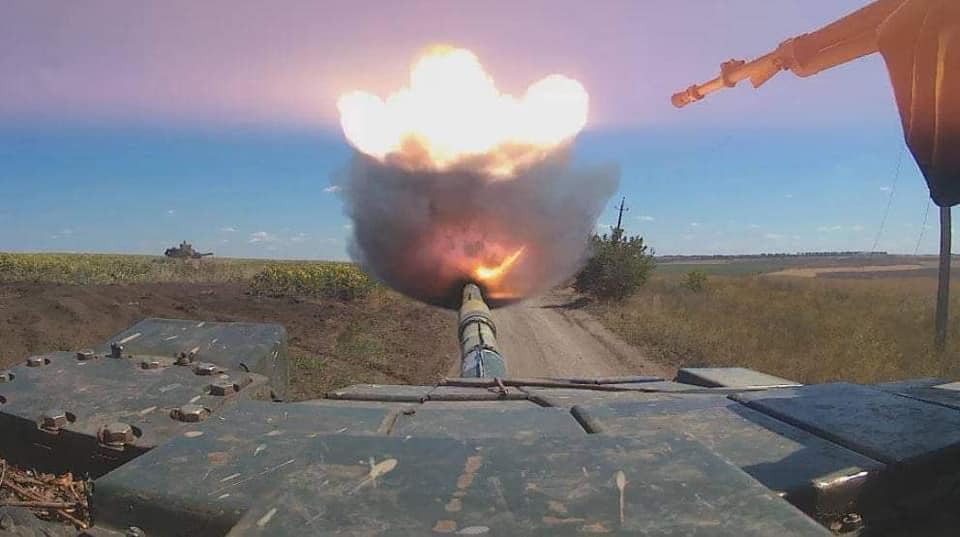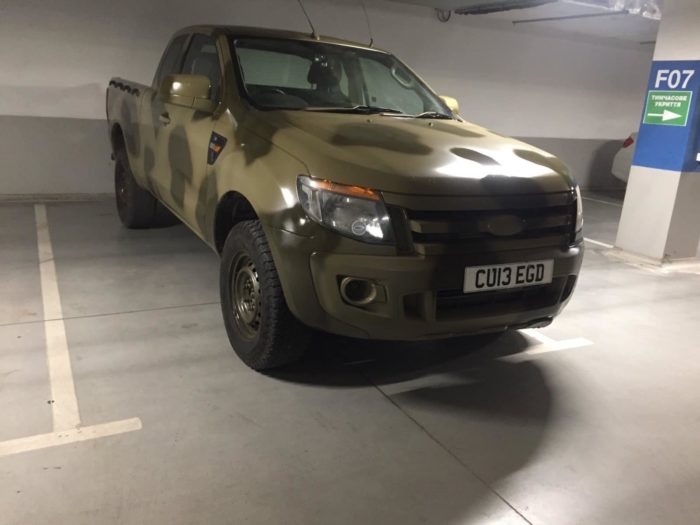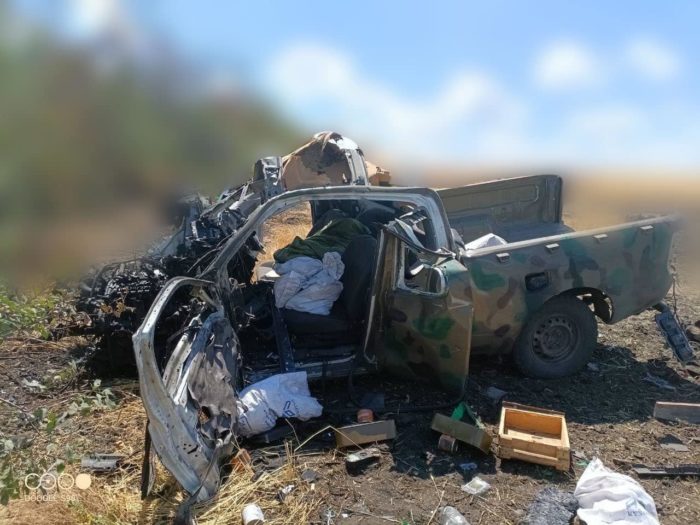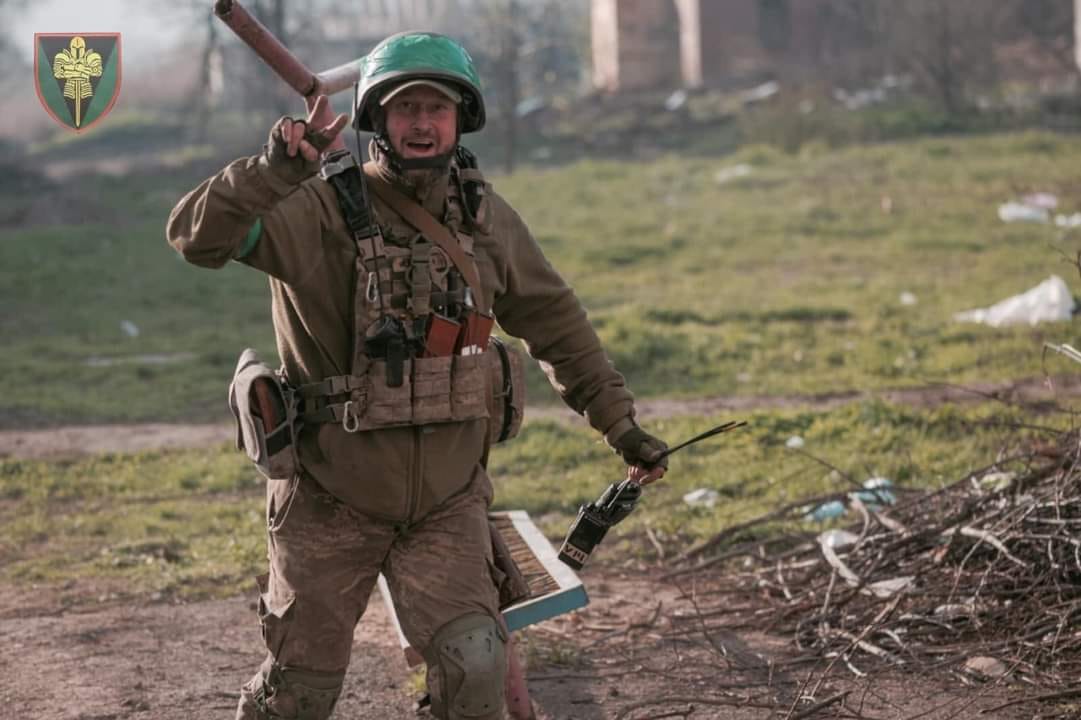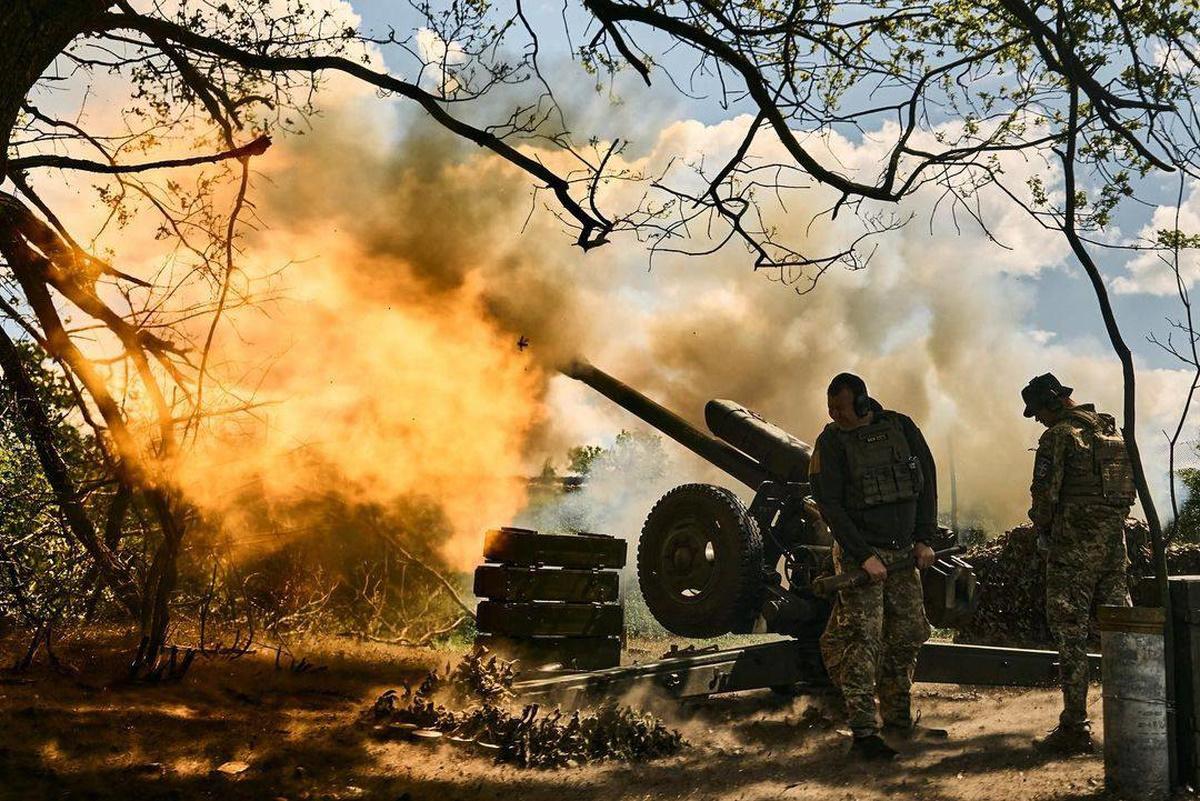How the Russo-Ukrainian war changed since the first phase ended in April
How has the Russian strategy changed since their defeat in northern Ukraine?
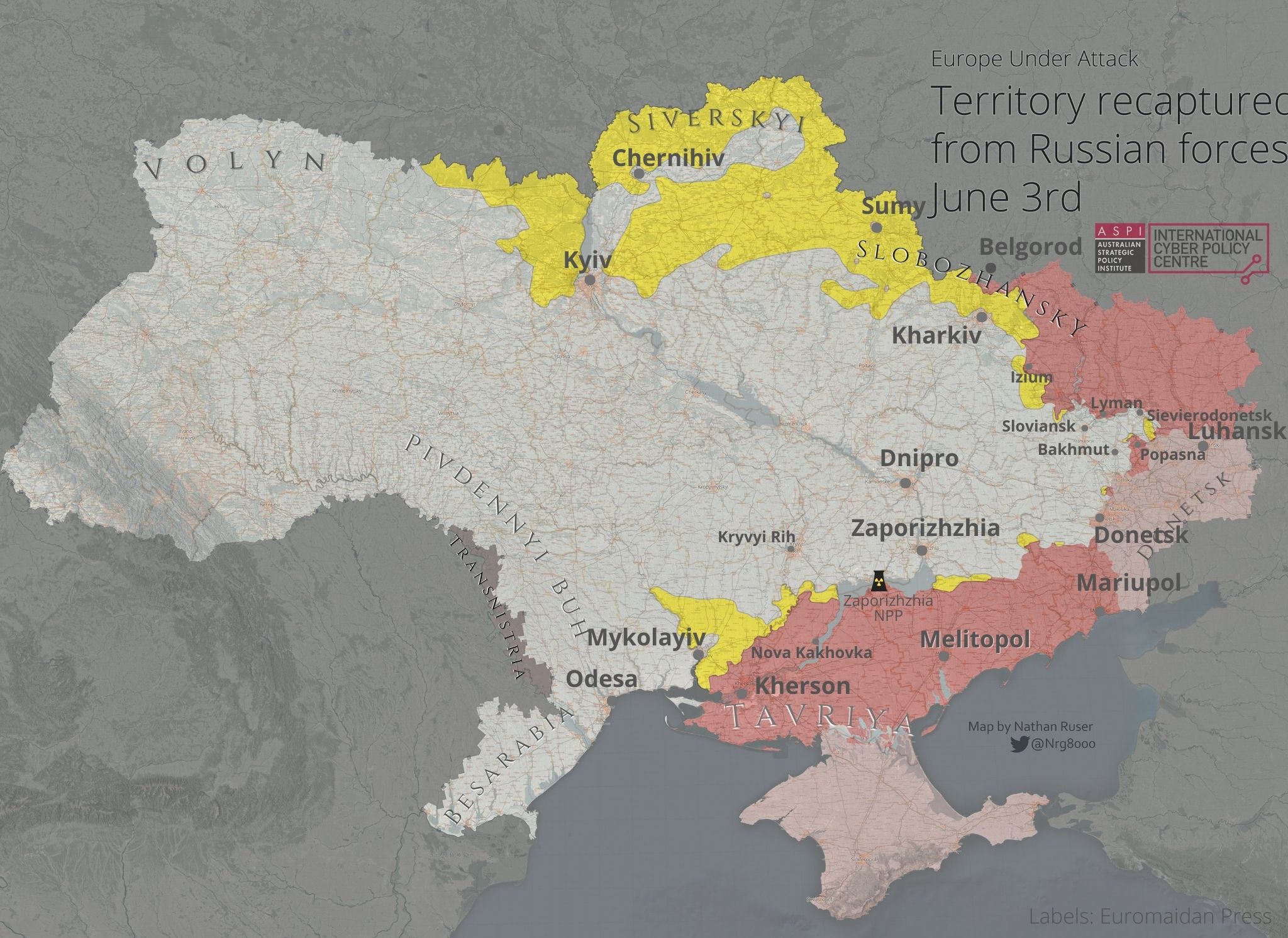
In the second stage of the war, starting from mid-April, the Russians finally started setting realistic goals. Their retreat from northern Ukraine showed that the goals that the Russian leadership set before themselves were way higher than their real military potential.
The initial advance was from different directions: in north Ukraine, from three directions on Kyiv; they attempted to isolate Kharkiv, advance on Odesa, Kryvyi Rih, and in parallel conduct strikes on the flanks of the Ukrainian Joint Forces operation in Donbas. In the second stage, the Russians acknowledged they have the means to advance in only one direction, and in the other ones they need to switch to defense.
Like Napoleon’s 1812: why Russian troops retreated from northern Ukraine
- On the strategic level, the Russians mainly adapted their strategy in acknowledging the great disproportion between their ambitions and potential in the first phase, and decreased their level of ambitions.
- On the tactical level, they started viewing Ukrainians as serious opponents. It is likely they did not fight as they were taught to fight in the first stage, because they did not expect resistance. This is exemplified by their march columns and lack of artillery support. Now the Russians started to draw upon their overwhelming artillery ammunition and are leveling Ukrainian positions to the ground, after which defense is impossible.
The second stage is important because we saw Russia’s limits -- the best that the Russians can fight.
Putin's claims that "Russia hasn't even started" are absolute nonsense. Yes, we saw that Russia has overwhelming artillery fire, but also insufficient manpower to convert their grinding through our territory into an encirclement of Ukrainian forces. All they can do is little by little squeeze us out. This is despite the warnings of some Ukrainian and foreign experts that the battle for Donbas will result in an encirclement and destruction of Ukrainian forces.
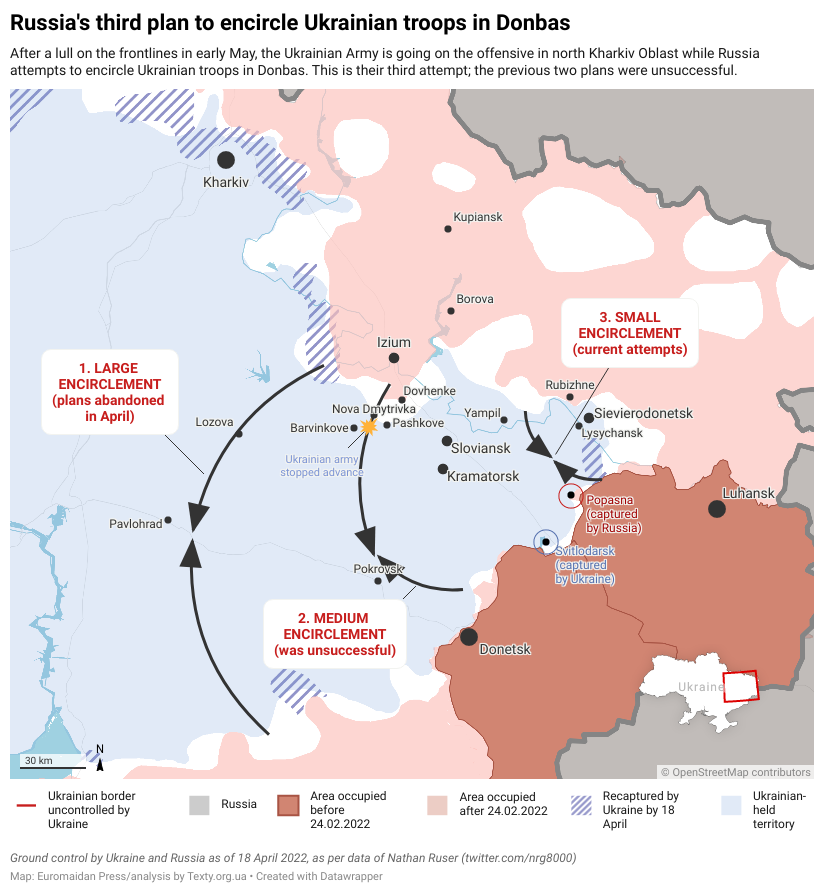
What about Ukrainians? How did they change their strategy and tactics? Now, Ukrainian troops are unable to do many raids behind enemy lines like they did in Ukraine’s north, attacking Russian flanks…
That Ukraine is unable to do what it did in the first stage of the war is a result of objective changes. Paradoxically, as Russia lowered its ambitions, a frontline started appearing and it is more difficult for Ukraine to work on the flanks of the enemy and their communications than before when the flanks of both sides were often open, and the concentration of forces was not so intense.
As well, the Russians are more careful. They can’t conduct such deep raids as before because Ukraine destroyed lots of Russian armored vehicles, approximately 50% of their tank arsenal, which makes it impossible to conduct deep strikes with tanks. They now conduct artillery strikes with the support of aviation and very slowly grind forward.
Ukraine has not changed the character of its defense. We try to work with artillery, although our capabilities are much smaller, and prevent the enemy from concentrating prevailing forces and bringing them to the frontline. And if there are attempts to break through the frontline, then we engage in combat and use our advantages, anti-tank complexes, grenade launchers.
It's very unlikely that the Russians will conduct maneuvers to surround and destroy Ukrainian forces -- because they simply lack the armor for that.
How much can the Russians replenish those losses? We’ve seen them demothballing old Soviet supplies.
It’s a difficult question because formally, they have a lot of decommissioned tanks like T62, T55, but we don’t know in what state they are and whether people are trained to use them. But look, in less than 5 months they lost over half of their tank force that they accumulated over the last 12 years -- -- this is an insurmountable loss.
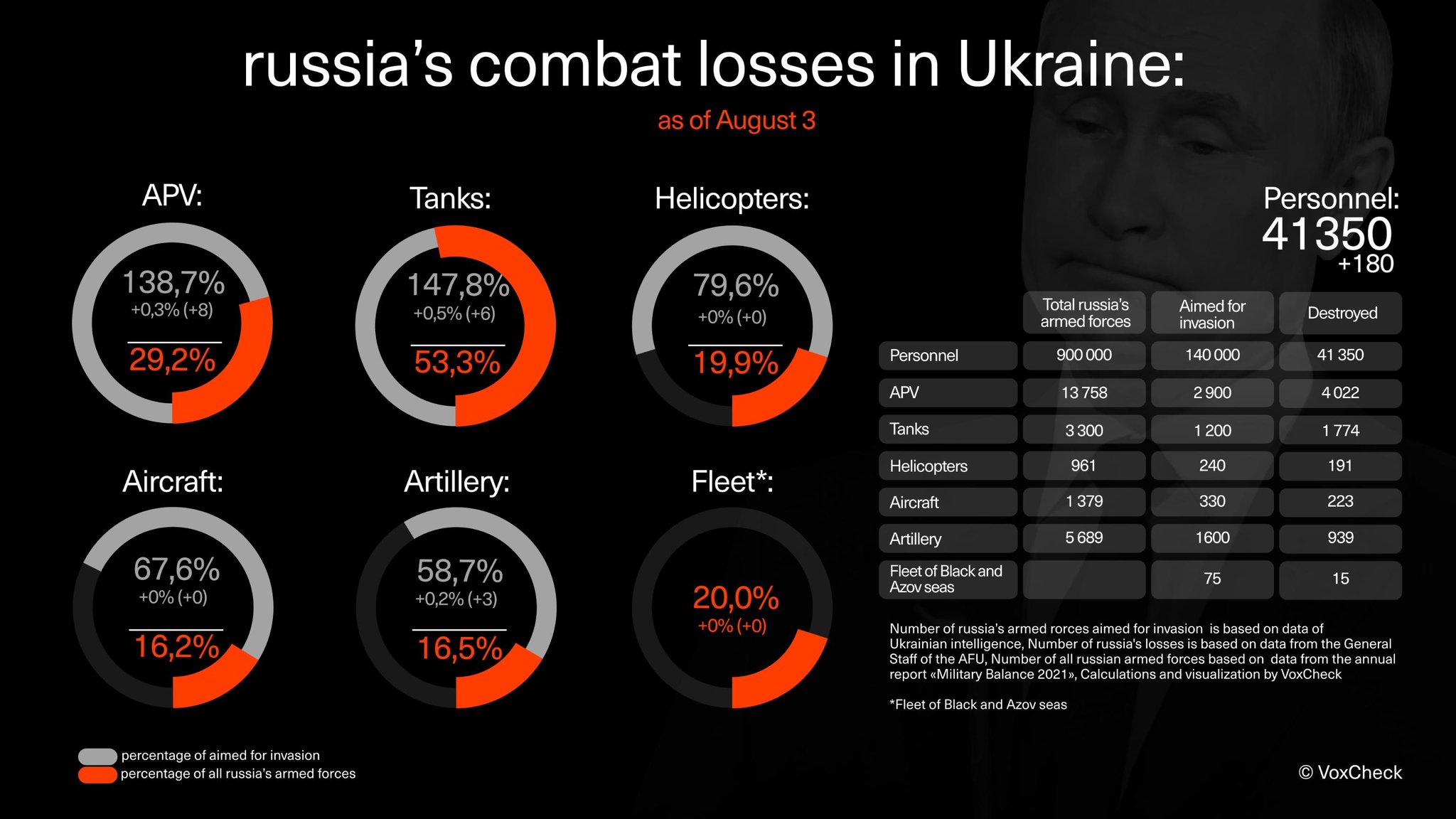
I would say that the Russians have lost their potential to surround Ukrainian forces. And the Russians see themselves the limitations they are now facing: they will be unable to quickly restore this, given the state of their defense industry and reliance on imported parts.
Ukraine’s counteroffensive in Kherson, Kharkiv, Donbas
Can we talk about a date when Ukraine will start a large counteroffensive in the south and east and start winning it back?

First, I would say that talking about offensive operations when the frontline has not been stabilized in all directions is premature. On the one hand, Commander in Chief Zaluzhnyi said that the frontline is stabilized and that Russia will not be able to advance. But on the other hand, we see the consensus of the US and British analysts that Russia will drive Ukraine out of Donetsk and Luhansk oblasts at least. In these circumstances, talking about a Ukrainian counteroffensive is causing cognitive dissonance in people: we still need to stabilize the frontline.
Regarding dates when Ukraine will counterattack, forecasting this is one of the most ungrateful affairs, because we don't know the real state of the enemy forces and their potential, and correspondingly Ukraine’s potential is more about stabilizing the front local operations to push out the Russians.
As recent weeks have shown, Ukraine can also conduct local “pushing out” operations in Kherson, near Kharkiv. This is also liberation, but it's not the same as surrounding and destroying enemy units, liberating territories to such an extent that the enemy cannot endanger them further. For instance, near Kharkiv, Ukraine pushed Russia away to the border, but they are constantly trying to get back.
So, the enemy is being pushed back and not destroyed. It's a bit too early to talk about serious Ukrainian counteroffensive actions.
Animation of frontline changes since April shows Russia's grinding advances in South-East Ukraine
West is sending Ukraine just enough weapons to not allow Russia to defeat Ukraine. However, it's not enough for Ukraine's victory, says @MBielieskovhttps://t.co/qz5Hp4EWZj pic.twitter.com/yqrTy5DX2Z
— Euromaidan Press (@EuromaidanPress) August 7, 2022
Regarding the nature of the announced counteroffensive on the right bank of the Dnipro in Kherson Oblast, people are likely expecting Ukraine to act by a World War II template -- quickly piercing Russia's tactical depth of defence in number of places then introducing a follow-on echelon to envelop/defeat the enemy grouping of forces. But Ukrainian actions might look different.
Ukraine might try to leverage Western-supplied long-range fire systems to exploit the Russian untenable position which depends on just four roads linking Dnipro right bank forces with the majority of Russian forces. Systematic Ukrainian shelling plus some frontal assaults might force Russia to make another goodwill gesture, like on Zmiinyi Island.
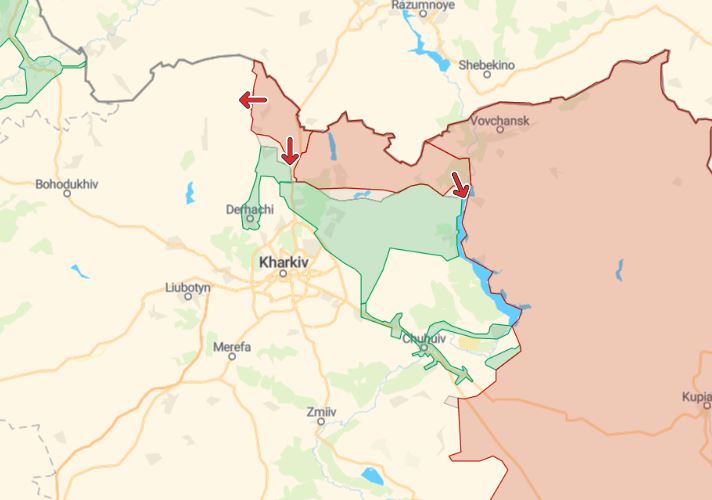
So can Ukraine counterattack, realistically? What is needed for this? We are hearing many scenarios, even from former NATO commander Stavridis, that Russia has already entrenched itself, that Ukraine won't be able to drive it out, and that a North Korea scenario awaits Ukraine.
This is not a secret – it’s a question of means that Ukraine has. The proportion of forces has to be in favor of the advancing forces, in terms of quality and quantity:
- Ukraine needs to have more firepower, to conduct strikes in the tactical depth of defense and beyond it like HIMARS does now.
- Plus, it needs to have strong armored tank units that can perform the role of quick maneuver of forces to isolate the region of operations and not allow the enemy to conduct its actions
There exists the opinion that NATO countries are giving us the necessary minimum to stabilize the frontline. I agree with this appraisal.
https://twitter.com/EuromaidanPress/status/1543822644218368001
Ukraine’s situation now is that everything given by our partners, especially rocket artillery, heads right away to the frontline, to "extinguish the fire" and stabilize the frontline. We are not creating a reserve of artillery and armored vehicles in preparation for serious counteroffensive actions.
Everything that we received – the M777, CAESAR, Krab howitzers, the Italian semi-self-propelled howitzers -- all of this went to the front. We don't have the luxury of creating a unit deep in the rear to conduct counteroffensive operations.
Video of Polish-made AHS Krab self-propelled howitzers at work in Ukrainehttps://t.co/i6wIYieIl8 pic.twitter.com/DRshIps1Ri
— Euromaidan Press (@EuromaidanPress) July 1, 2022
What does the "strategic defeat" of Russia actually mean in practice?
It means showing Russia that it can't defeat Ukraine on the battlefield, that it doesn't have the potential, and preventing it from advancing further greatly. This is what the White House and Biden administration officials mean by Russia's "strategic defeat."
It’s the "minimum program" -- to stabilize the frontline and not allow Russia to advance further.
However, this strategy has a major setback. How should Ukraine live and develop in the meantime, with 20% of its territory occupied, a sea blockade, constant missile strikes, and the necessity to maintain a huge army? All these issues complicate economic life greatly, and there is no answer to this dilemma. So this situation pushes Ukraine towards negotiating with Russia, and this is another problem of this approach.
What Ukraine needs to mount a military counteroffensive
What weapons does Ukraine need in to win, not just to secure the strategic defeat of Russia?
It's a question of the number of arms. Ukraine’s representatives presented these calculations at an exhibition in Paris.
The frontline is maintained by 40 brigades. They are of different types: there are heavier, mechanized, tank brigades, and lighter, motorized infantry brigades, or airborne assault troops or marines. Unfortunately, the new brigades which are being formed now, the Reserve Corps, Territorial Defense brigades that are implementing tasks on the frontline -- these are fairly light brigades.
To start an offensive, we need 25 of those 40 brigades to be mechanized. And an additional 20 mechanized reserve brigades – 45 mechanized brigades in total.
For one mechanized brigade, we need one tank battalion (31 tanks), three mechanized battalions (3x 31 IVFs, APCs, or light wheeled vehicles), and a brigade artillery group (two squadrons of barrel and one squadron of rocket artillery, totaling 36-48 units, as one squadron is 12-18 units). And, of course, Ukraine needs separate artillery brigades that will be armed with large numbers of HIMARS.
|
What weapons Ukraine needs to launch a counteroffensive |
|
|
Units |
Weapons |
|
45 mechanized brigades (25 on the first line, 20 in the reserve) |
1400 tanks |
|
4200 APC/IFV |
|
|
1100 self-propelled howitzers like M109 |
|
|
8 separate artillery brigades |
400 self-propelled howitzers: Krab, CAESAR, Panzerhaubitze 2000 |
|
50-60 MLRS: HIMARS/M270 with ATACMS and GMLRS missiles |
|
Now, Ukraine has newly-created brigades of the territorial defense on the front. What are those? They have some SUVs that people procured for themselves, and maximum one grenade launcher and one mortar. And that's it. No tanks, no serious artillery. The same goes for airborne troops or motorized infantry vehicles or marines. They have much less equipment than a standardized brigade. So, it's a question of heavy equipment.
The brigades need to receive the equipment, undergo combat coordination, this takes a few months. Going on the offensive is always more difficult than defense, in terms of coordination, simultaneity.
To sum up: for a counteroffensive, Ukraine needs more weapons, and a better level of preparedness, simultaneity, and quality of command.
Growth pains with Territorial Defense
You mentioned Ukraine needs a prevailing force. This includes manpower. What is happening with the mobilization to the Ukrainian Army? We're seeing conflicting signals about motivation, and reports about panic.
The main risk was when Territorial Defense brigades with little heavy equipment were placed in positions or tasks that were difficult for them. Then the disenchantment, panic, criticism that some western media wrote about arose. But this practice had objective reasons: a solid frontline needed to be created so the enemy would not have holes into which to direct its forces.
This is a greater risk than potential problems with mobilization. These will be leveled out when a greater flow of heavy equipment will come and potential soldiers will see that they will have a greater chance for survival in the ranks of not a vulnerable light brigade but a full-fledged mechanized brigade.
Problems with the Territorial defense may also be connected to the fact that people who signed up for it probably misunderstood what hypothetically could happen. Plus, this philosophy that "I will defend only my region" is not that good; the line of defense of western Ukraine right now is in the south and east.
Many people are crowdfunding for SUVs for such units that don't have vehicles; these SUVs are destroyed upon first contact with artillery. Does it make sense to run such fundraisers?
Under the conditions of Ukraine receiving insufficient amounts of even light armored vehicles, even the same APC M113, there is no other option to have even minimal mobility. Imagine that a new brigade of territorial defense is formed - they have no wheels at all; this greatly complicates their performance of duties and diminishes their chances for survival.
Ukraine didn't get HIMARS for a long time and didn't get long-range missiles for a long time because of strategic calculations. What strategic calculations can there be to not send the same M113s? They carry no strategic danger for Russia. But speaking of this, HIMARS don't carry it either.
A crowdfunded SUV supplied by a volunteer group to frontline army units was destroyed by Russian shelling only a week after deployment. But it managed to save several lives. Photo: Kateryna Chepura / FB
NATO wants a strategic defeat of Russia, not a victory of Ukraine
Regarding western weapons, there were taboos that eventually were lifted. First, before the invasion, a taboo on any weapons, then a taboo on offensive weapons, then one on MLRS, and there was even talk that there exists an unofficial NATO agreement against supplying tanks to Ukraine. And as I understand there is still a taboo on jets. What helped lift these taboos?
I would say that there weren’t taboos, but rather wrong conclusions of western intelligence about how long Ukraine will fight and if it's worth giving it a large number of heavy weapons or even light weapons. This was the main problem for them: why help massively even with light systems if the army-army confrontation will end very quickly?
Ukraine’s western partners were rather planning to help the partisan movement that they envisaged would emerge after the Ukrainian army was defeated. Plus, it's much easier to organize training and delivery of handheld anti-tank weapons and MANPADS designed for a partisan movement than heavy equipment. For these reasons, Ukraine got its Javelins and NLAWs.
Trending Now
Together with Ukraine’s Soviet artillery arsenal
, they managed to deliver the results of stopping the Russian army in the first month of the invasion and making them review their plans.
Javelins are good, but it is artillery strikes that coined Ukraine’s military success
With further weapons deliveries:
- on the one hand, there were calculations to not give weapons that were considered to cause an escalation between the west and Russia;
- on the other hand, there was the need to give Ukraine the chance to fight and implement the concept of strategic defeat of Russia, demonstrating that Russia does not have the armed potential to defeat Ukraine.
It was logical to give weapons of 155 mm caliber, and after that HIMARS, because it emerged that the 155 mm artillery was insufficient to stabilize the frontline.
It initially concerned jets, and now has migrated to the 300-km ATACMS missiles for HIMARS. However, as Ukraine demonstrates that it uses HIMARS rationally and as much as possible on military objects, this will become an additional argument for Ukraine to obtain the sought ATACMS missiles together with the GMLRS already supplied. And especially given that the 300 km range does not present a danger to the main Russian economic and political centers and bases of strategic nuclear weapons storage.
Are there signs that NATO could switch to another concept - not the strategic defeat of Russia but the real victory of Ukraine? What should happen for this new concept, without which Ukraine cannot win, to take root?
This will be difficult to realize at the NATO level; if it happens, it will rather be at the level of separate NATO countries. Maybe Ukraine should convince them that the risks of escalation that Russia touts are overstated and that Ukraine has a chance for victory. But it will be difficult because the implicit nuclear danger remains and the threats work, unfortunately.
How real is the risk of nuclear escalation risk? Some say it's a blackmail tactic, but many in the West are convinced that Putin will use nuclear weapons.
Russia was successful in trading threats before and many make the conclusion that this potential exists. From the viewpoint of escalation threat games, Russia will always have an advantage. For Russia and the Putin regime, the stakes are higher, and their threats will look more convincing than the readiness of the West to raise the stakes, and even more because the White House signals the limits to the possible. Unfortunately, Russia’s implicit threat, "keep it in mind," works. For me, the assessment of chief of US intelligence Avril Haines is indicative: if Russia starts losing, the threat of Russia's use of tactical nuclear weapons, even demonstrative use, rises.
What would be the consequences? Demonstrative use may not carry any consequences even on the battlefield. But nobody wants to live in such a world. The West would be forced to react. And there will be no risk-free options. So that also influences the West’s behavior and position -- because the implicit threat exists.
What events could encourage the West to reassess its position regarding this implicit threat, so that they start helping Ukraine attain a victory?
We are in a way hostages of our own success. Particularly -- because the Russian regional plan didn't succeed and many in the West say "so the Russian army turned out to be not that powerful, it can't even win over Ukraine, so why should we help the Ukrainians. We will help with the bare minimum because there is no great threat anymore and it is not worth risking an escalation for.” But Russia’s offensive potential is still retained and Ukraine is still aiming to stabilize the frontline.
Honestly, it's hard for me to imagine what could change the western position. Even the latest news with Russian missile strikes do not convince the west. many are fine with a draw; and they don't answer the question what Ukraine should do economically, how it should survive, how it should uphold a million soldiers who Ukraine can't afford to keep in the field that long. But many in Europe aren’t worried about this.
How HIMARS have influenced Ukraine’s counteroffensive potential
Ukrainian officials claimed that the arrival of western artillery will change the situation on the front. The weapons are here - when will the situation change?
The question is what they meant by the change in the situation. The stabilization of the frontline is the minimum task. But regarding serious offensive actions, there must be much more weapons -- artillery, armored vehicles, and anti-aircraft defense. I think they were talking about the first task, and the assessment that Commander-in-Chief Zaluzhnyi gave his US vis-a-vis is that HIMARS help to stabilize the frontline. So right now, we are talking about stabilizing the front.
Our "long hand" - made in the USA - doing its work.
Direct shot.#HIMARS
Footage by the General Staff of the #UAarmy pic.twitter.com/Fa3lUJJsO9— Defense of Ukraine (@DefenceU) July 4, 2022
Can it be that the amount of weapons Ukraine received is larger than declared?
I heard this idea a lot - but it's wishful thinking. If this was the case, we would have more quickly stabilized the front and upheld the remaining part of Luhansk Oblast. And we would see this in the dynamics of the frontline, in our assault operations. If we had much more weapons than declared, the Ukrainian military command would start implementing another set of tasks.
What about HMARS. First, Ukraine destroyed the ammunition depots: how did this influence the Russians, who are now claiming they will not store weapons in depots anymore and will instead bring them directly to the front?
The idea that they will decentralize the depots is not realistic. You can't fully decentralize them. They will probably now be further than 80 km from the front and the Russians will have more logistical problems. But there are still several rail lines by which supplies come in and fully decentralizing them is not possible. Plus, there is a question whether the Russian vehicles will be capable to haul all the ammunition. But regarding influencing the situation at the front, the ISW was unsure whether it did make an impact on the intensity of shelling. It could be that the number of shelling will decrease but not to the extent we hoped for. I think it's too early to say what the effect is. It's clear there is some effect, but whether Russia will not be able to conduct offensive actions -- at least one month should pass before we can say for sure.
Our authorities urged to supply a large number of HIMARS to Ukraine, presidential aide Podoliak put the number at 300. But critics said there are plenty of logistical challenges with HIMARS, which are useless without ammunition. How much is Ukraine constrained by logistics?
The argument of logistics being the primary limiting factor is unconvincing. Political limitations from Washington are the main issue, not logistical challenges. If we got more HIMARS, there would be more logistical tasks, but really, it's only a question of time and the needed number of lorries which will haul the ammunition. Ukraine has enough lorries.
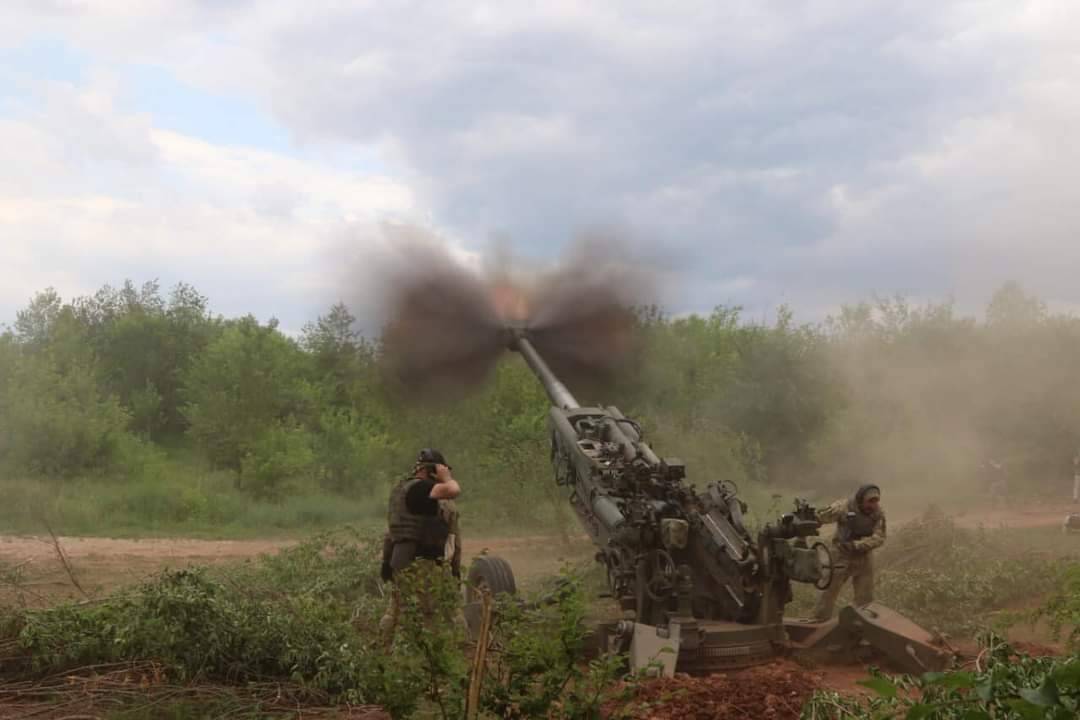
We see that the Russian command has ordered to destroy HIMARS. Does this confirm the effectiveness of the systems?
I think this is indeed an indirect acknowledgment that this system is important physically and psychologically. They probably will not be able to live up to the threats to destroy HIMARS, because they did not manage to complete analogous tasks that required a lot of reconnaissance. Proof of this is that Russia could not establish air domination, could not disrupt Ukraine’s logistical chains, plus we use the HIMARS mostly at night, because Russia has few reconnaissance systems that work in night. To hit a HIMARS, The Russians must employ lots of reconnaissance systems, and if we notice them doing this, we can switch to another region. In this game, we have the initiative. It's not like the M777, which to be effective must approach the frontline.
Does Ukraine still need to close the sky
At the start of the war, there were many calls to close the sky, then this idea seemed to vanish. How much is this demand relevant today? What is needed for it? Does Ukraine have a chance to receive the planes it needs?
The idea really existed and it's interesting to see how priorities have changed. Starting from mid-March, the demand to close the sky faded into the background and requests were made primarily for rocket artillery. This is a reflection of a miracle that nobody expected: Russians couldn't establish air superiority, one of the main tasks of a modern war.
But in reality, this is no miracle but a consequence of two things:
- Ukraine’s potential was enough (fighter jets, SAMs),
- the Russians lacked platforms, special armaments, and skills for this task.
They have a limited potential, and they wanted to do everything at once: air domination, and strikes on logistics, and the system of command, etc., which didn’t work.
But sooner or later this topic will return: our arsenal of interceptor missiles is being depleted, equipment is being worn out, and the same goes for jets, a part of which we lost. The fact that the US agreed to give two NASAMS systems indicates that the issue of the sky faded only temporarily, and will be relevant again.
What goes for jets, in some time Ukraine’s leadership will start mentioning them again, and sooner or later the West /USA will decide to give us one squadron of jets -- 12 aircraft plus 2 for training, because otherwise we won't be able to hold the sky on Soviet legacy equipment.
Will the squadron be also from old Soviet jets?
The old Soviet reserves are also running out. As far as I understand, we can maintain our park of MiGs thanks to the deliveries of parts coming from Poland. So no, they have to be US jets, F15, F16 for instance.
Will Ukrainian pilots be able to learn how to use them?
The Poles were able to. The Romanians were able to. It's a question of time and investments.
One needs a year to study, for instance, plus our pilots have lots of experience on the Soviet systems. Yes, they're different, and have different avionics. time is needed, more than for a HIMARS, more than for an M777, yes, we need infrastructure and airfields, but it's a political decision.
Reznikov said it well: a no doesn't mean it's a no forever. The West won't have a choice. If the west wants the sky above Ukraine to continue being contested and for Russia to receive a strategic defeat, then help will be needed with SAMs and jets -- they can be effective only together.
What can be done to protect Ukrainian cities from Russian missiles?
I understand the request to minimize this threat, but we need to understand some moments: apart from Israel, no country in the world has such a multi-layered air defense system, and this is possible because the territory is relatively small.
So, we can talk about increasing the number of targets that Ukraine intercepts. Right now, it's at 1/5-1/3. Increasing this it's just math: the number of SAMs, missiles, and radiolocation stations. A good goal for us would be to get it to 2/3; for this we need more SAM units, more missiles, more radiolocation stations. But we won't get it above 80%, so we'll still have to rely on passive protection. And there is a dilemma: everything invested into defense isn't invested into offensive actions, and you can't win a war with defense only. Put yourself into Ukrainian Commander-in-Chief Zaluzhnyi's and Defense Minister Reznikov's position: you have a limited number of resources -- what will you invest them in -- into anti-aircraft defense or MLRS?
The air defense Ukraine needs to stop Russia’s missile terror
Potential of Ukraine’s domestically-produced weapons
Right now, Ukraine is dependent on western arms and one of the reasons is Soviet-caliber ammunition running out. Ukraine also produced arms, for instance, the Vilkha long-range MLRS. Are really Ukraine's capabilities to produce ammunition destroyed? Can we produce military equipment, or have those capabilities been destroyed?
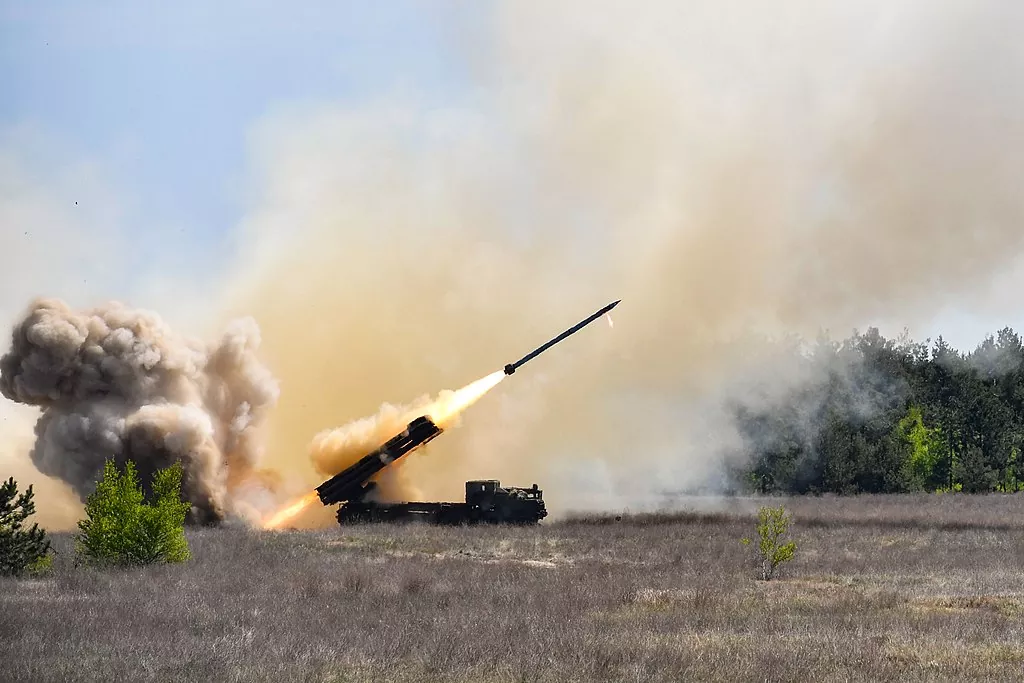
Talking about the defense industry is even more difficult about military actions, because there is no objective information.
The Ukrainian defense industry was an industry of single samples and small batches. The Bohdana is a single sample. The Vilkha is a product of small batches. And there are many questions about this and the development of Ukraine’s defense complex as a whole. All these 30 years it developed as an isolated defense industry, and there was the idea that Ukraine can be autonomous in production and supply. As a result, we had low production capacity and survived thanks to exporting modernized Soviet weapons.
So, the idea that Ukraine can independently produce serious systems is unviable. And proof of this is Poland, which went by a different model. They didn't play the game "we can produce everything ourselves," but signed contracts with western producers and with the systems that were tried and tested. They said "we'll buy your systems but we'll localize a part of the production." And now they have Krab, we don't have anything. Their Krab has a South-Korean chassis, a British gun, but at the end, there is a Krab that the Poles can supply to us. The idea that Ukraine can launch a mass production on our or Polish territory is unlikely. We couldn't do this before the war because of our isolated defense sector.
https://twitter.com/EuromaidanPress/status/1542473873417019392
Why can't we produce more Bohdanas? We made one, so why can't we just make more?
We need the necessary capacities and we can't manage them. Even Poles produce the Krabs in small quantities -- they have under 100 produced so far. The overall deindustrialization played a role. This Polish example of the Korean-British hybrid Krab is an example of what we could realistically produce ourselves.
Currently, even the US doesn't produce all their weapons totally by itself. A more prospective approach is creating joint enterprises with the Poles, deploying production on their territory, preferably - with the employment of US technologies, and buy ready solutions, rather than going by this post-Soviet philosophy that we have our own defense industry and it can do everything and in the end, we have only single samples which are, admittedly, still pretty raw. Yes, the Bohdana got its fame while attacking Zmiinyi Island, but we can't consider it a ready product. And any potential production should be on Polish territory because building anything in Ukraine, except for deep under the earth, is irrational.
https://twitter.com/EuromaidanPress/status/1542464258461601792
Does the same go for ammunition?
As far as I remember, Ukraine did not have production of artillery calibers; there was a production of gun cartridges in Luhansk and that's all. The artillery missiles were mostly produced on Russian territory in USSR.
Can we start producing them now?
Even the Americans are wondering if they can start producing the necessary artillery ammunition now. This is a consequence of deindustrialization. A RUSI paper wrote that the US couldn't supply enough ammunition at the rate it is being used now by Ukraine. There were attempts to produce ammunition in Ukraine before the war, but imagine what size of a production it should be to produce 5-6000 missiles a day. Plus, it's a question of machines for production: we don't have them and need to buy them. Will anybody sell them to us? That's a question.

Mykola Bielieskov is a Research Fellow at the National Institute for Strategic Studies under the President of Ukraine. The expressed views are that of the author only and don’t represent the official position of the National Institute for Strategic Studies.
Related:
- Created in three days, Ukraine’s territorial defense ruined Russian plans to capture Kyiv
- Like Napoleon’s 1812: why Russian troops retreated from northern Ukraine
- Why long-range Western MLRS can become a game-changer for Ukraine
- “With start of invasion, foreign firms started selling us sh*t.” How Ukraine’s top military charity saves lives today
- Javelins are good, but it is artillery strikes that coined Ukraine’s military success
- Russia’s nightmare comes true. HIMARS altering the course of the war in Ukraine, but for how long?
- The air defense Ukraine needs to stop Russia’s missile terror

